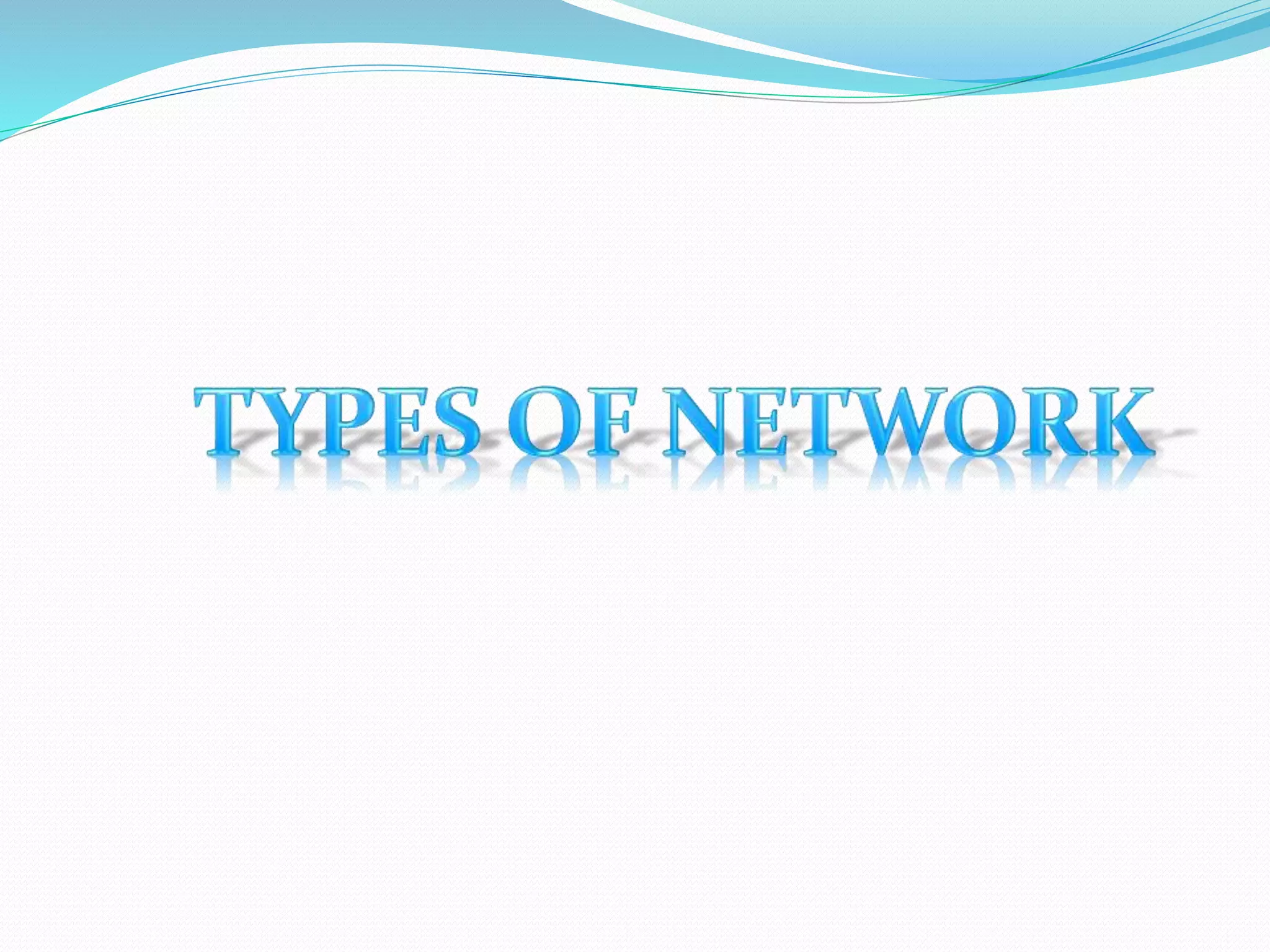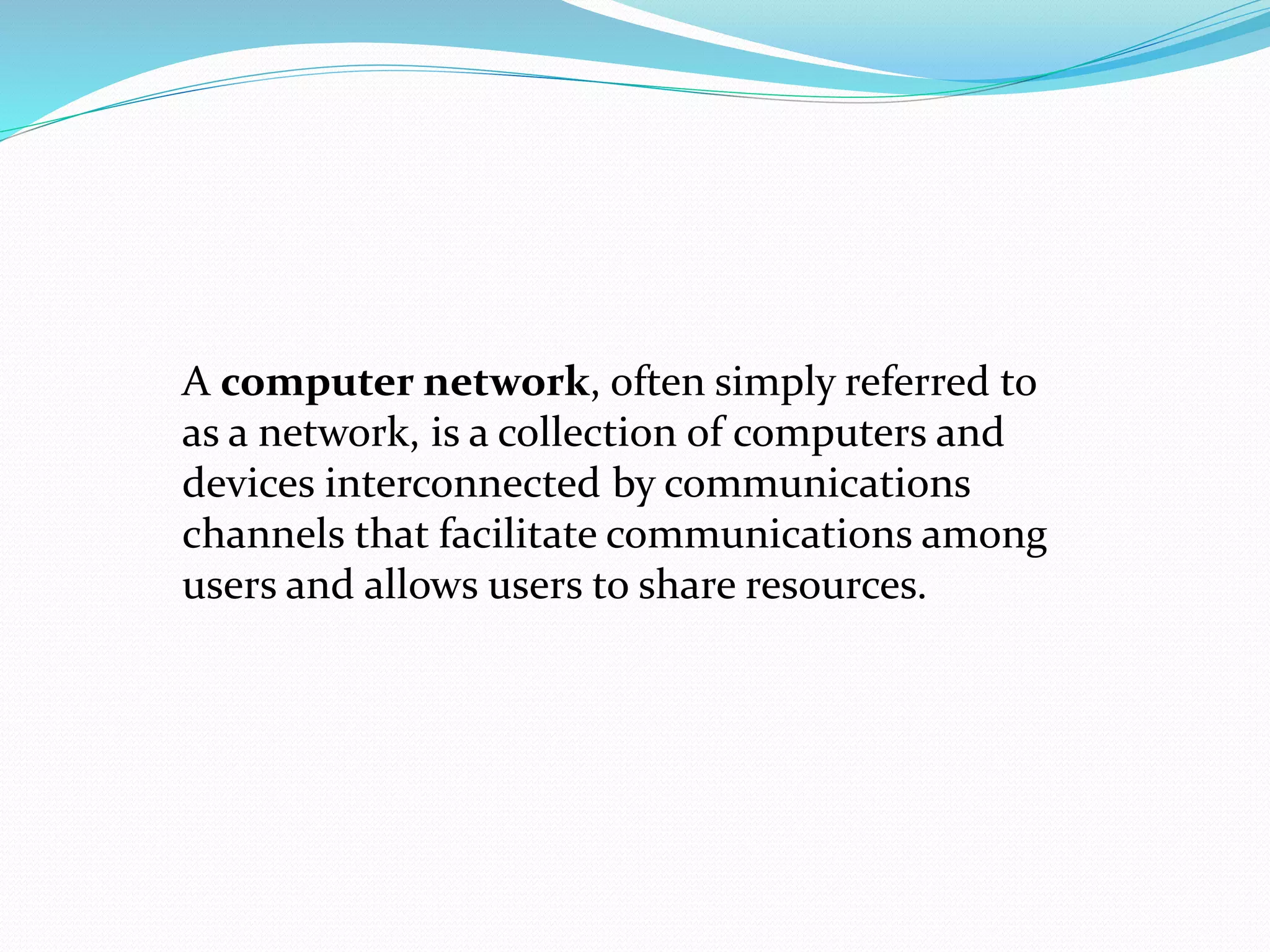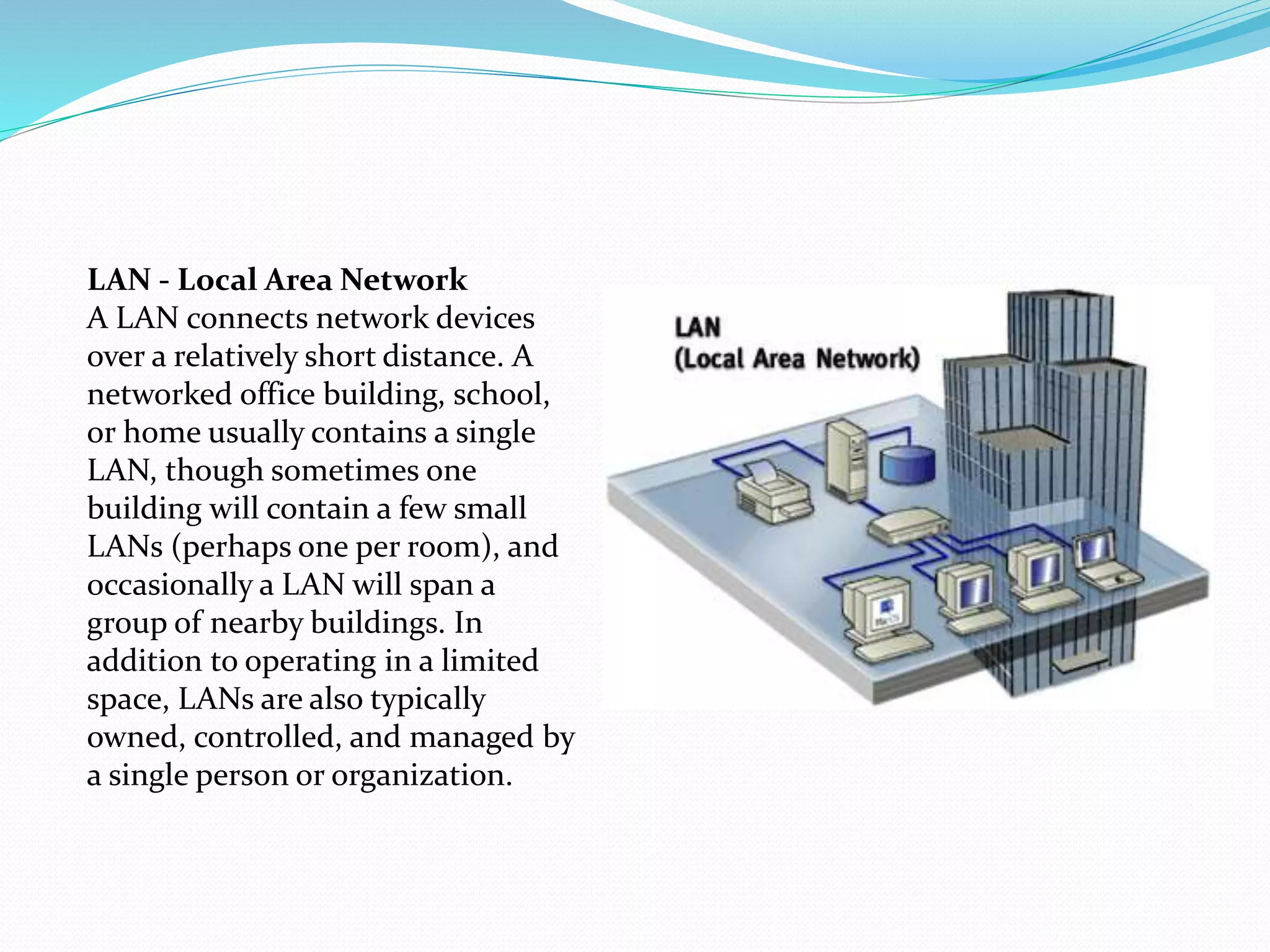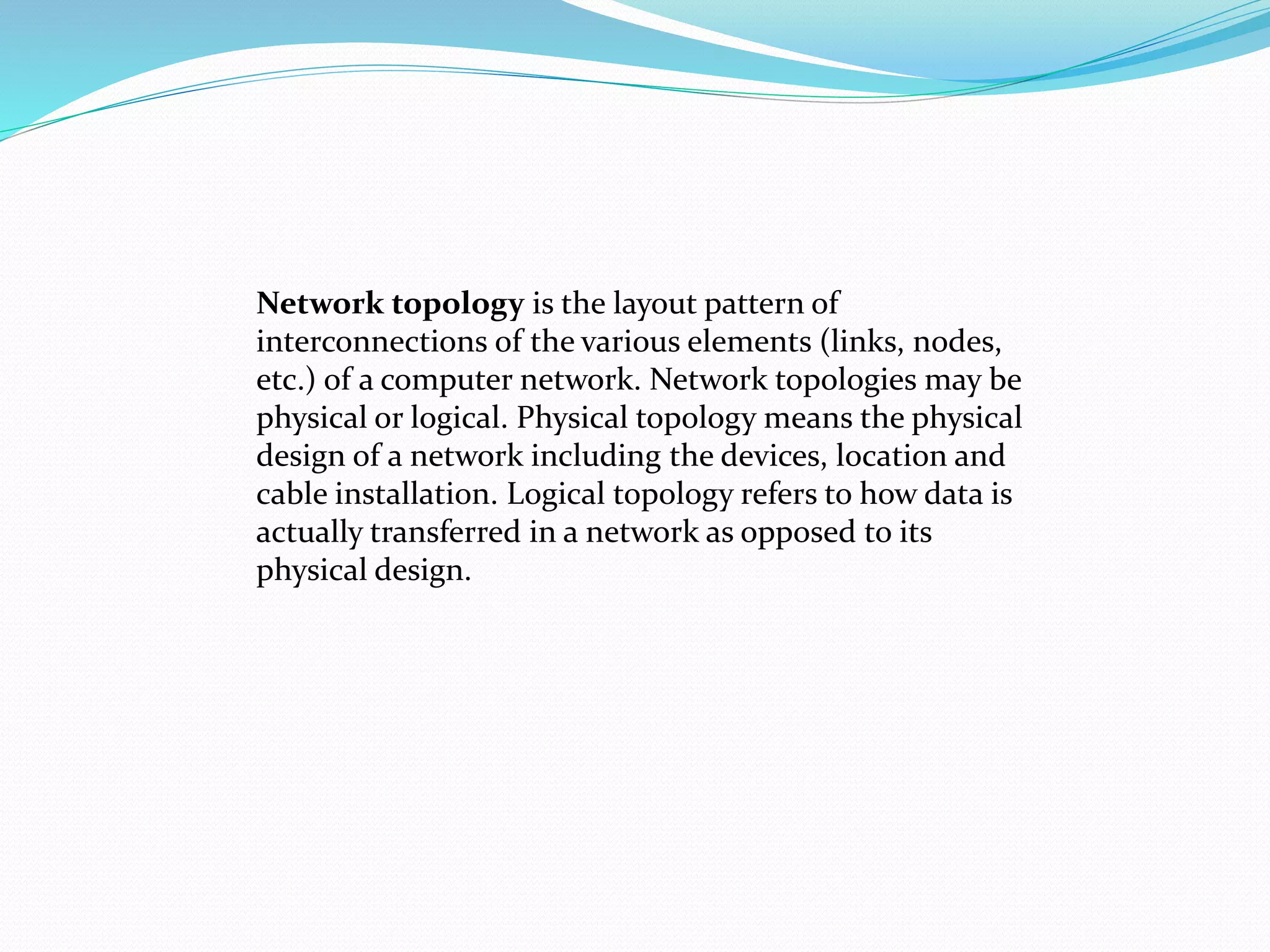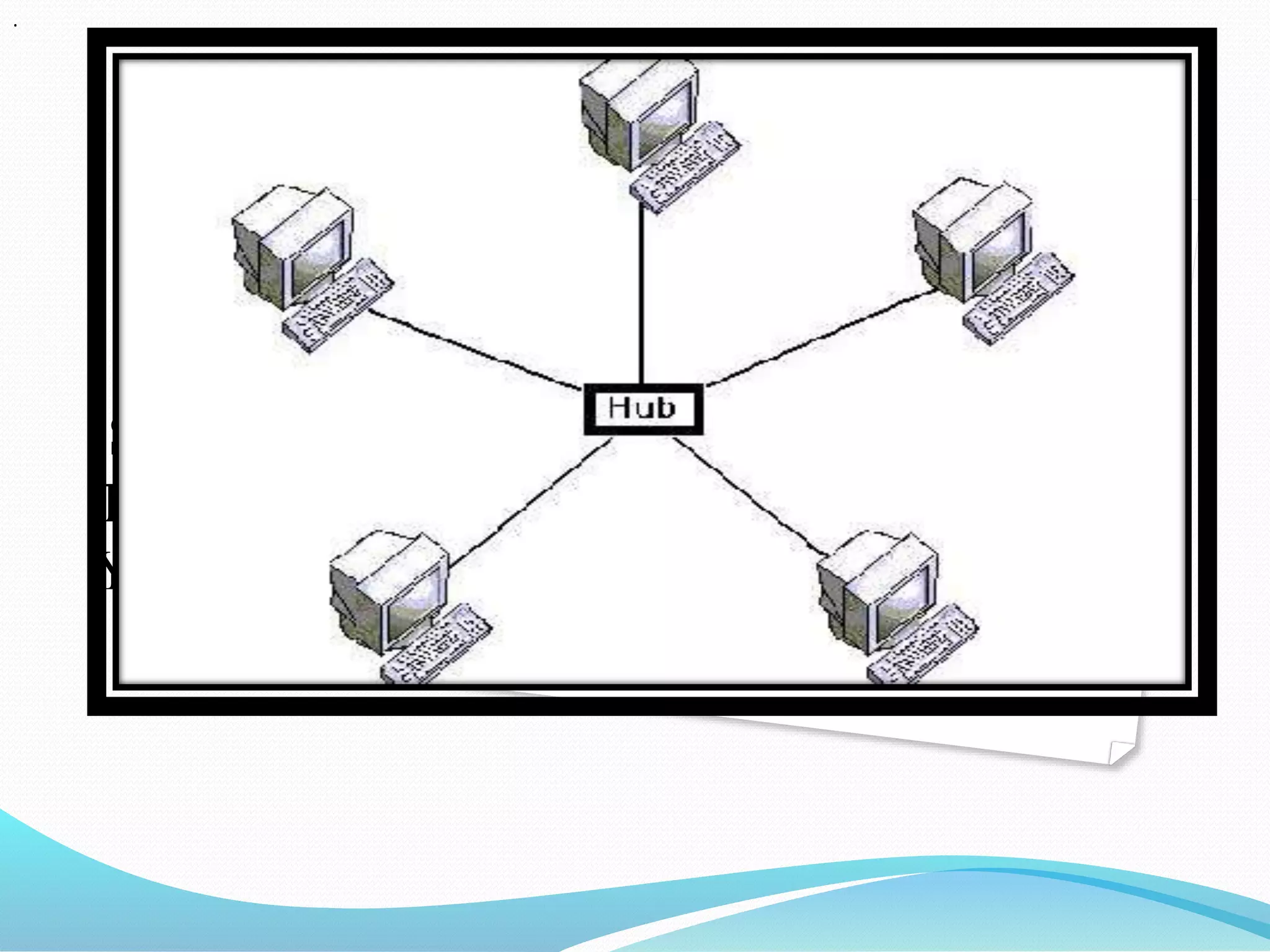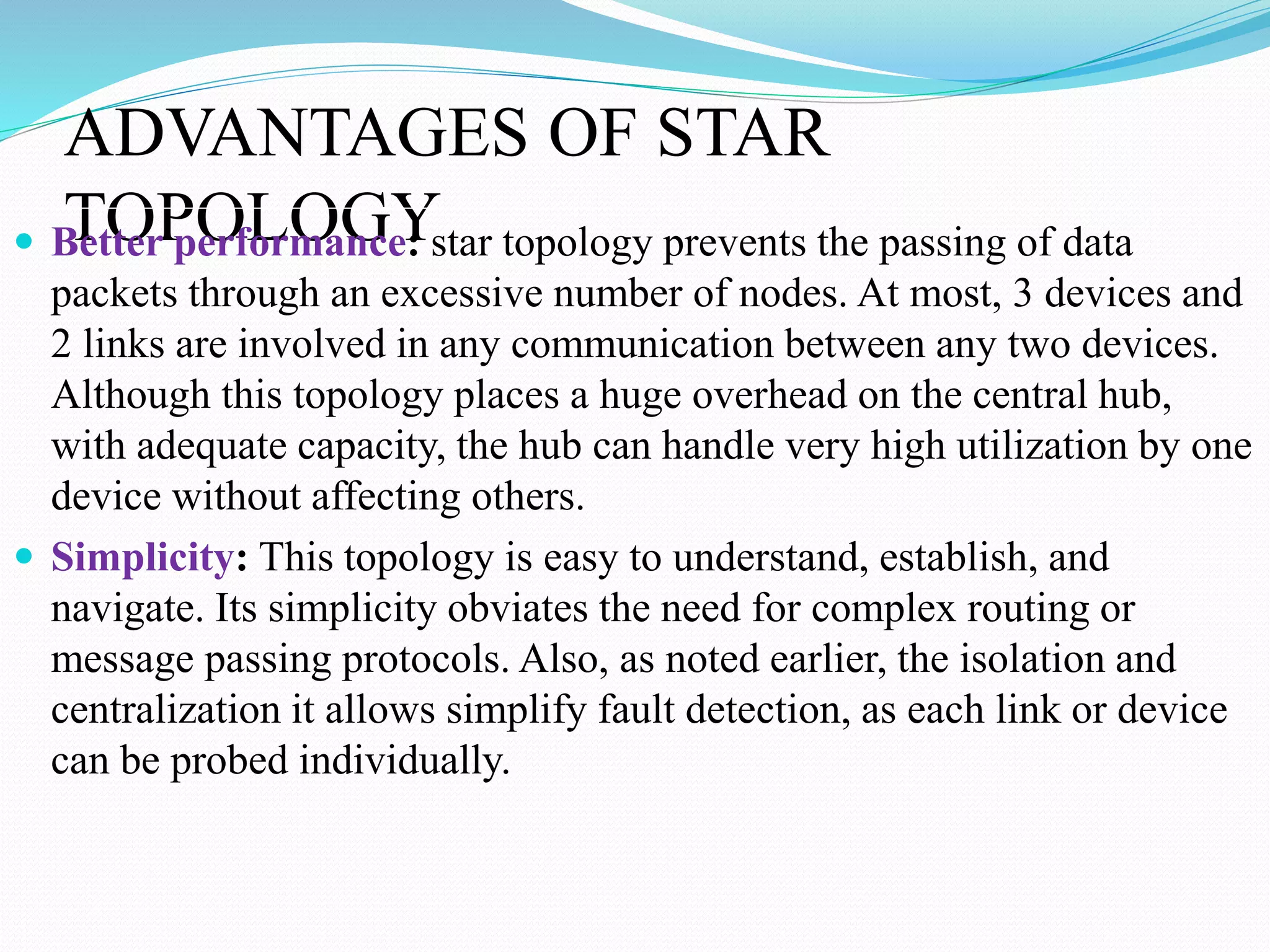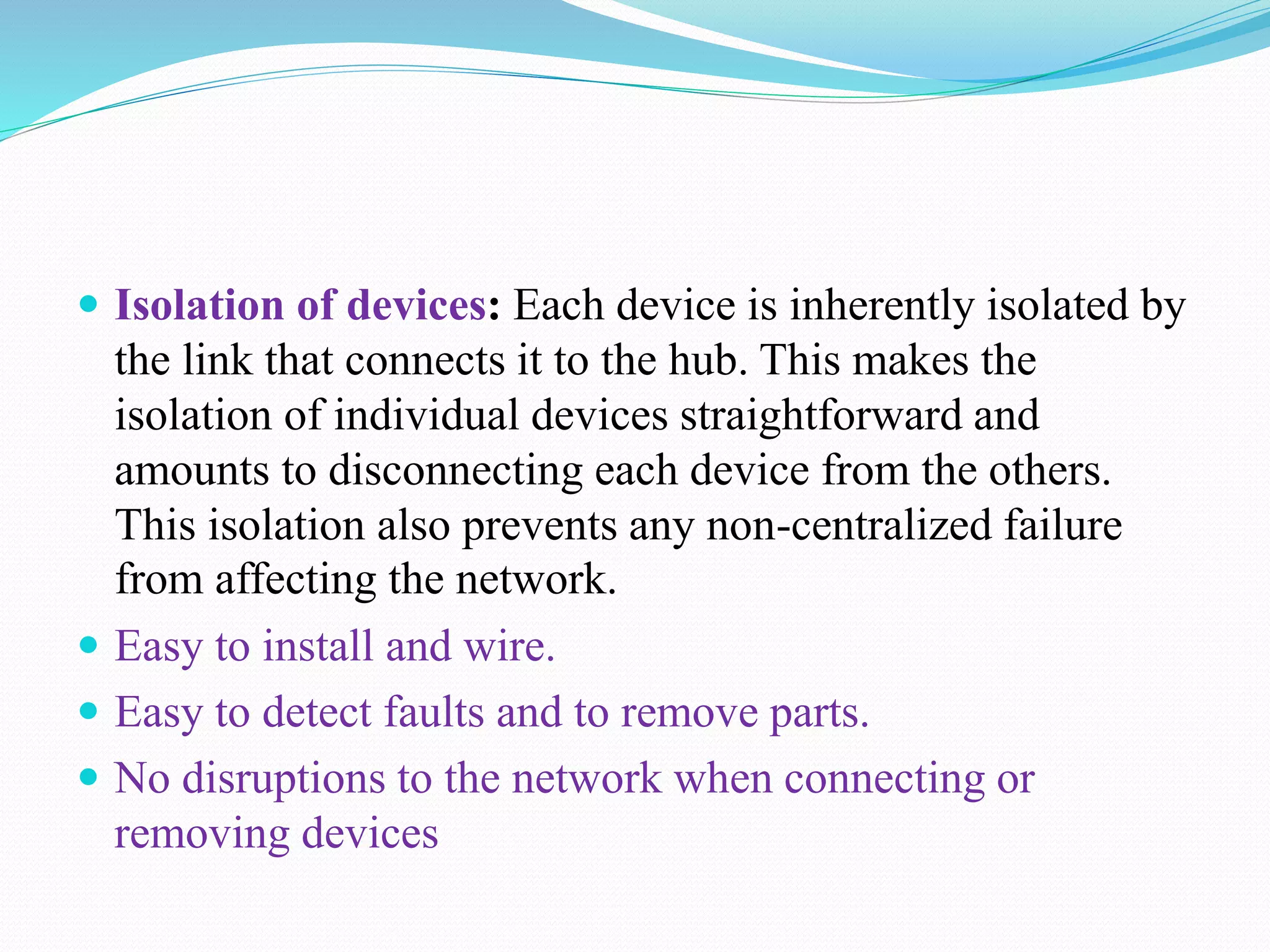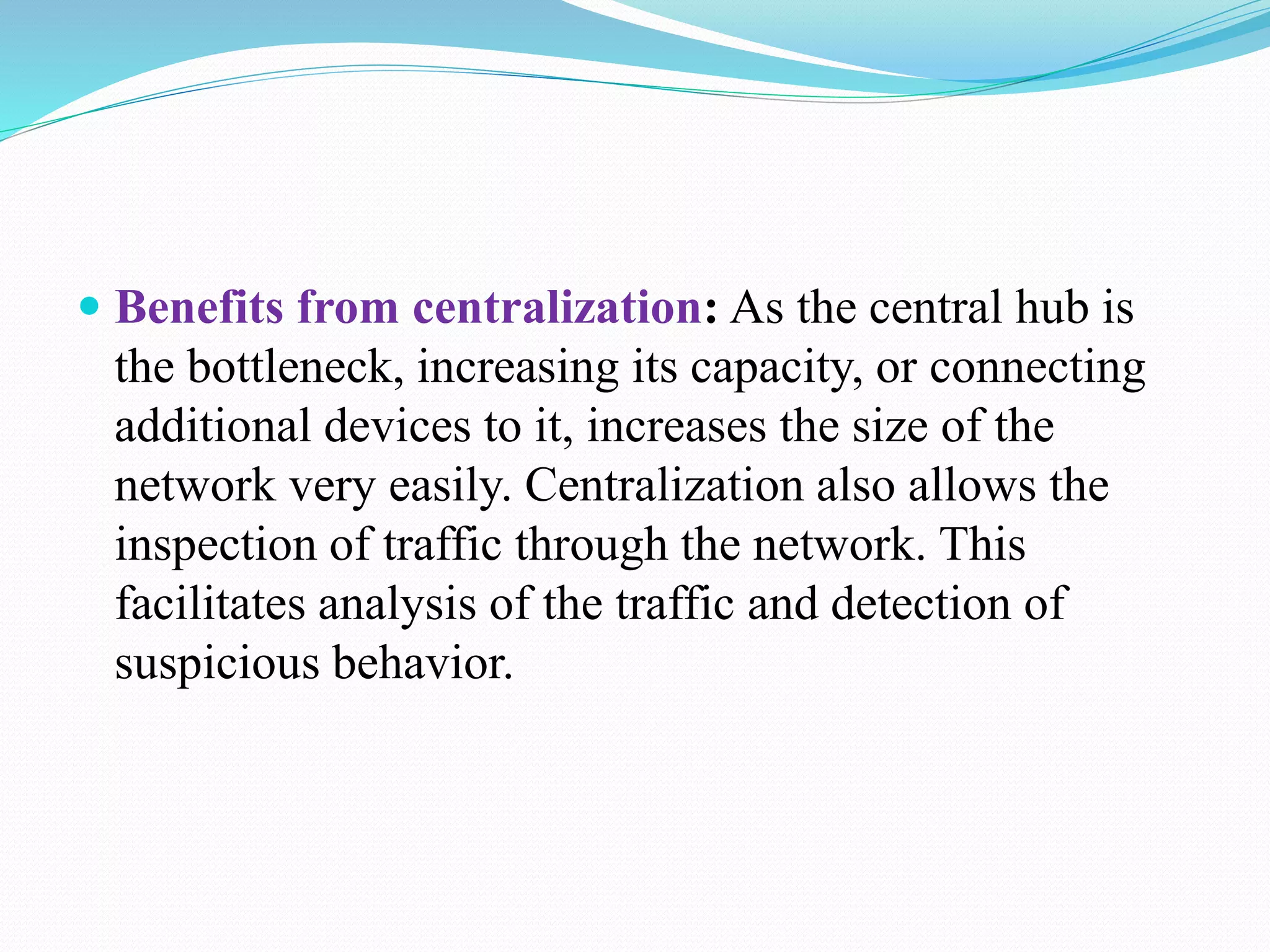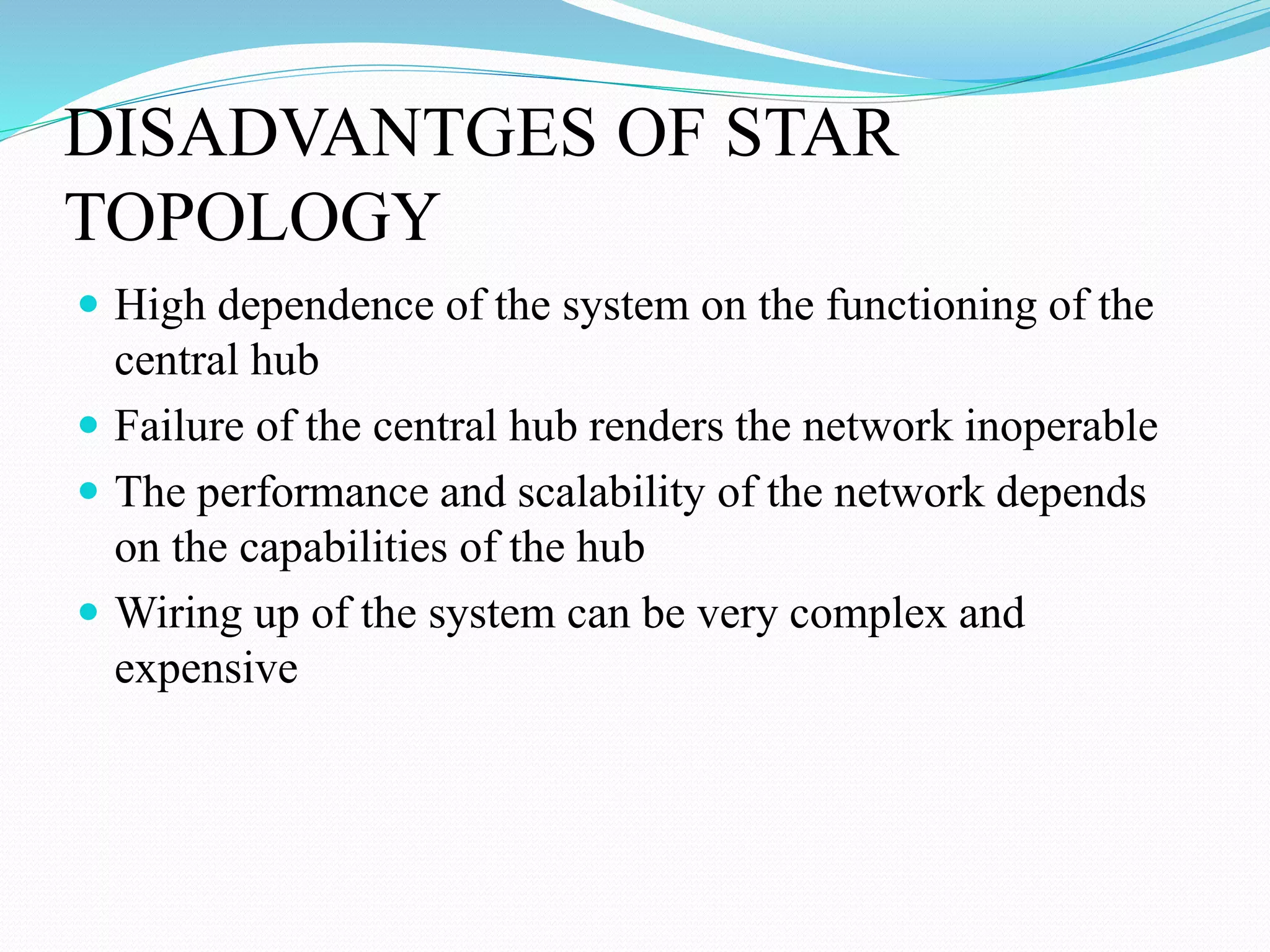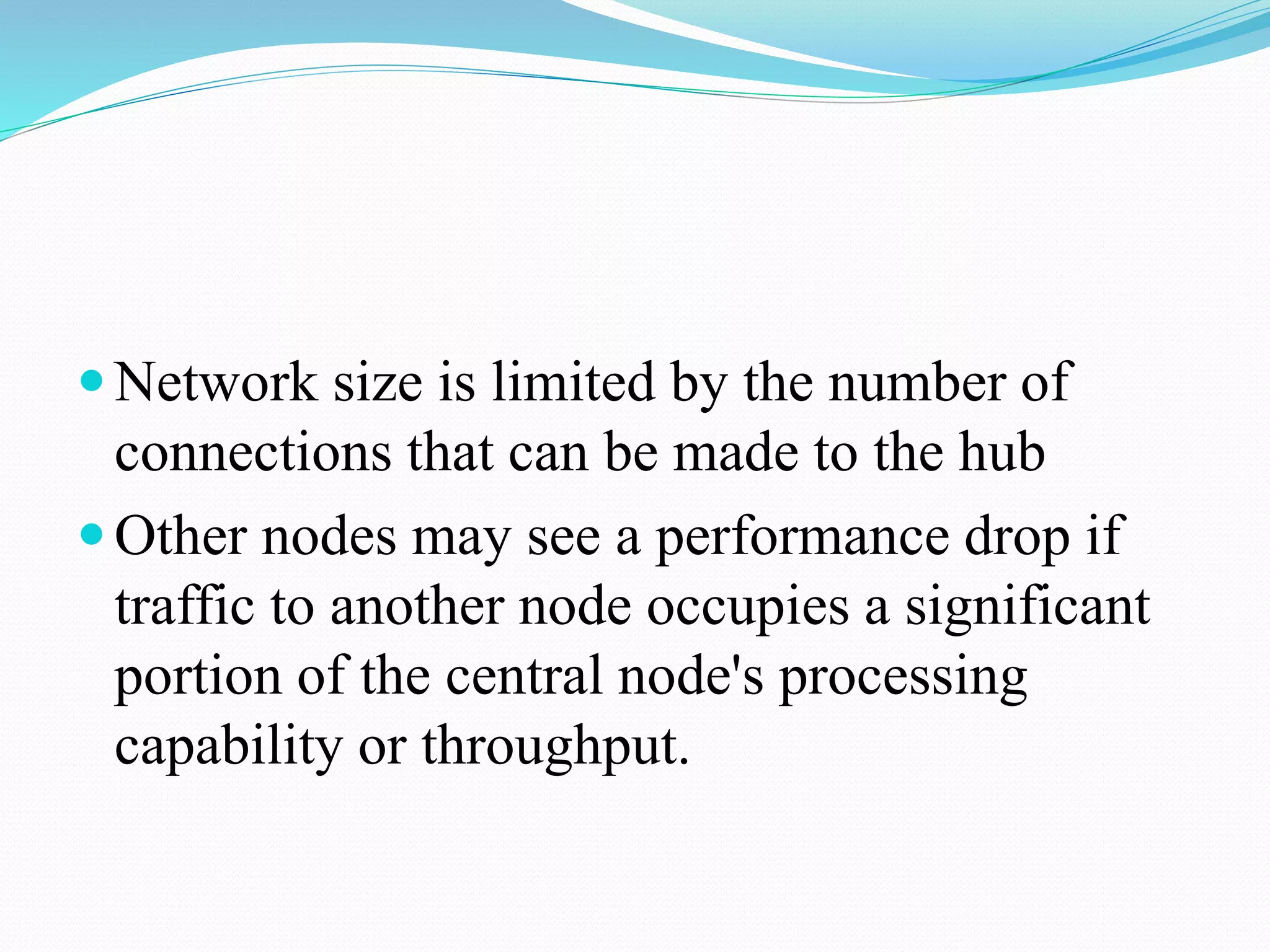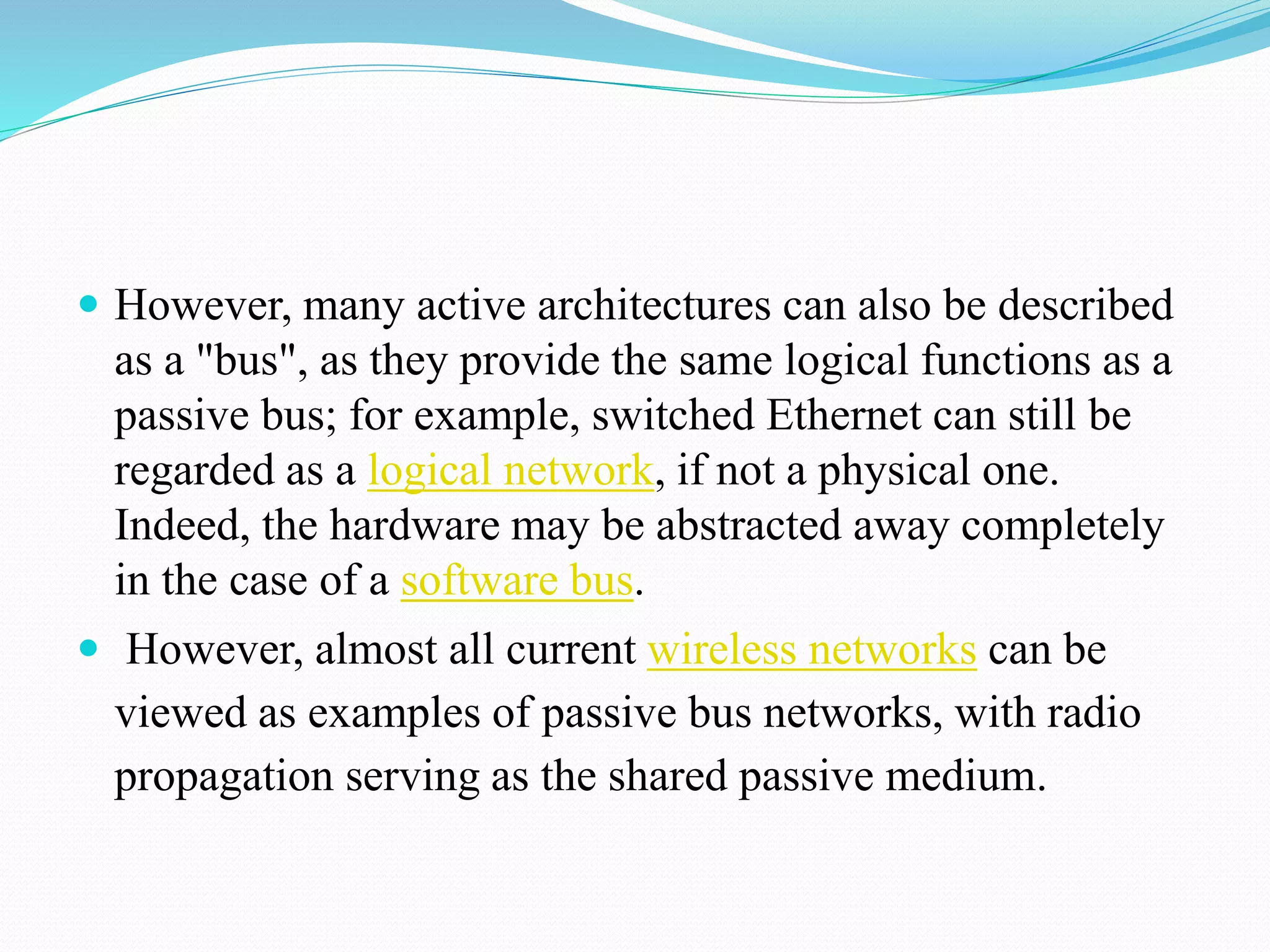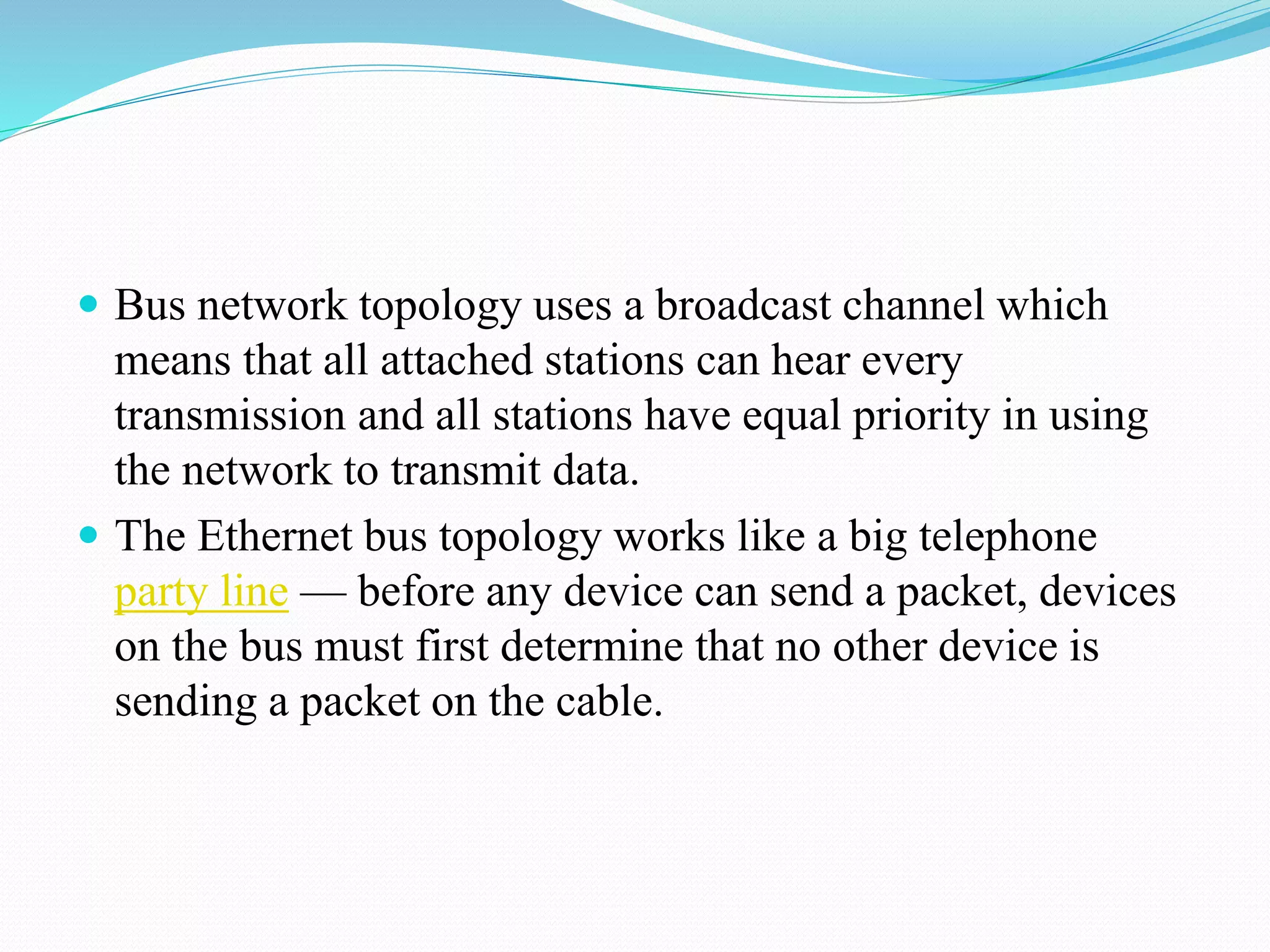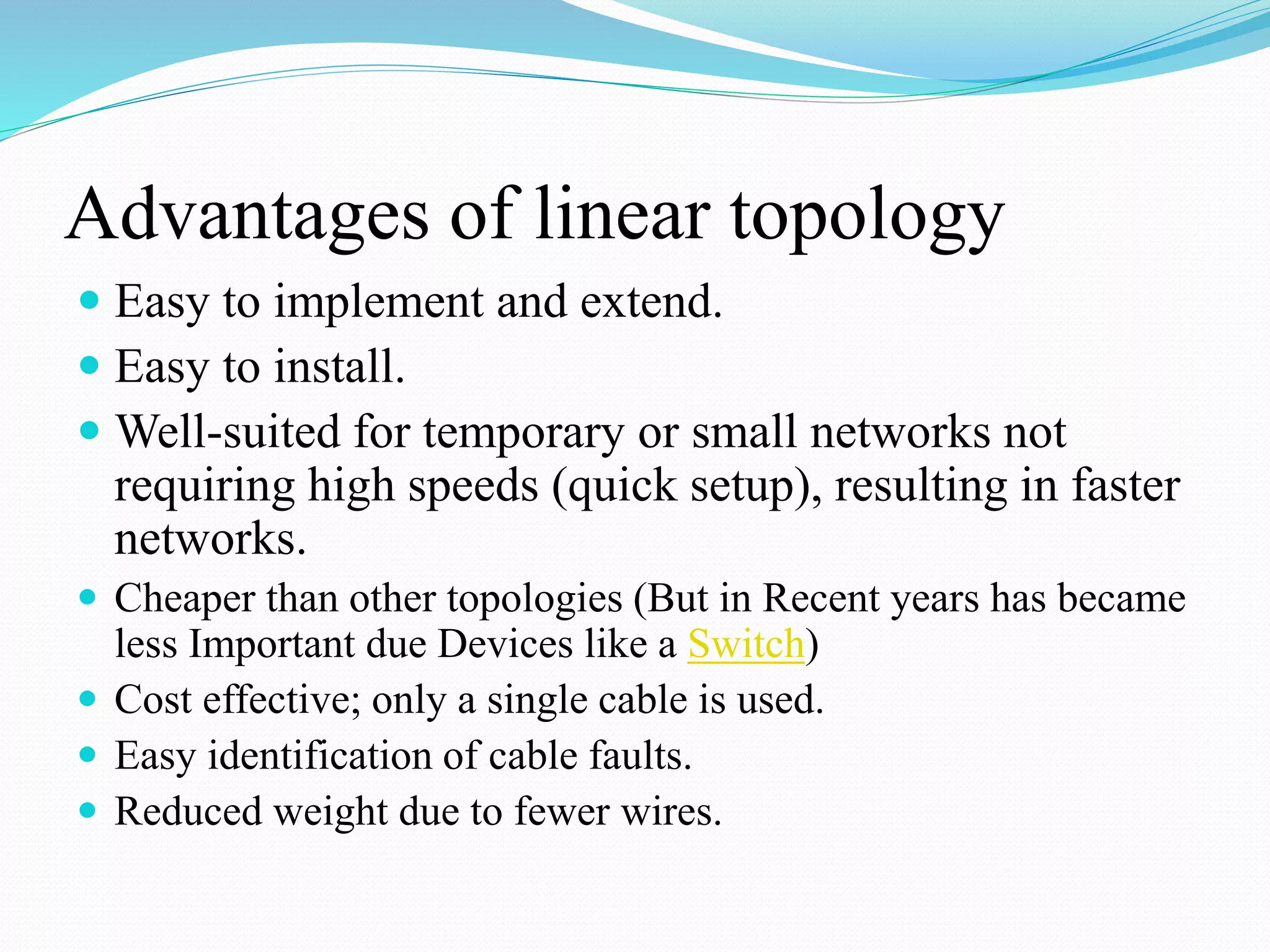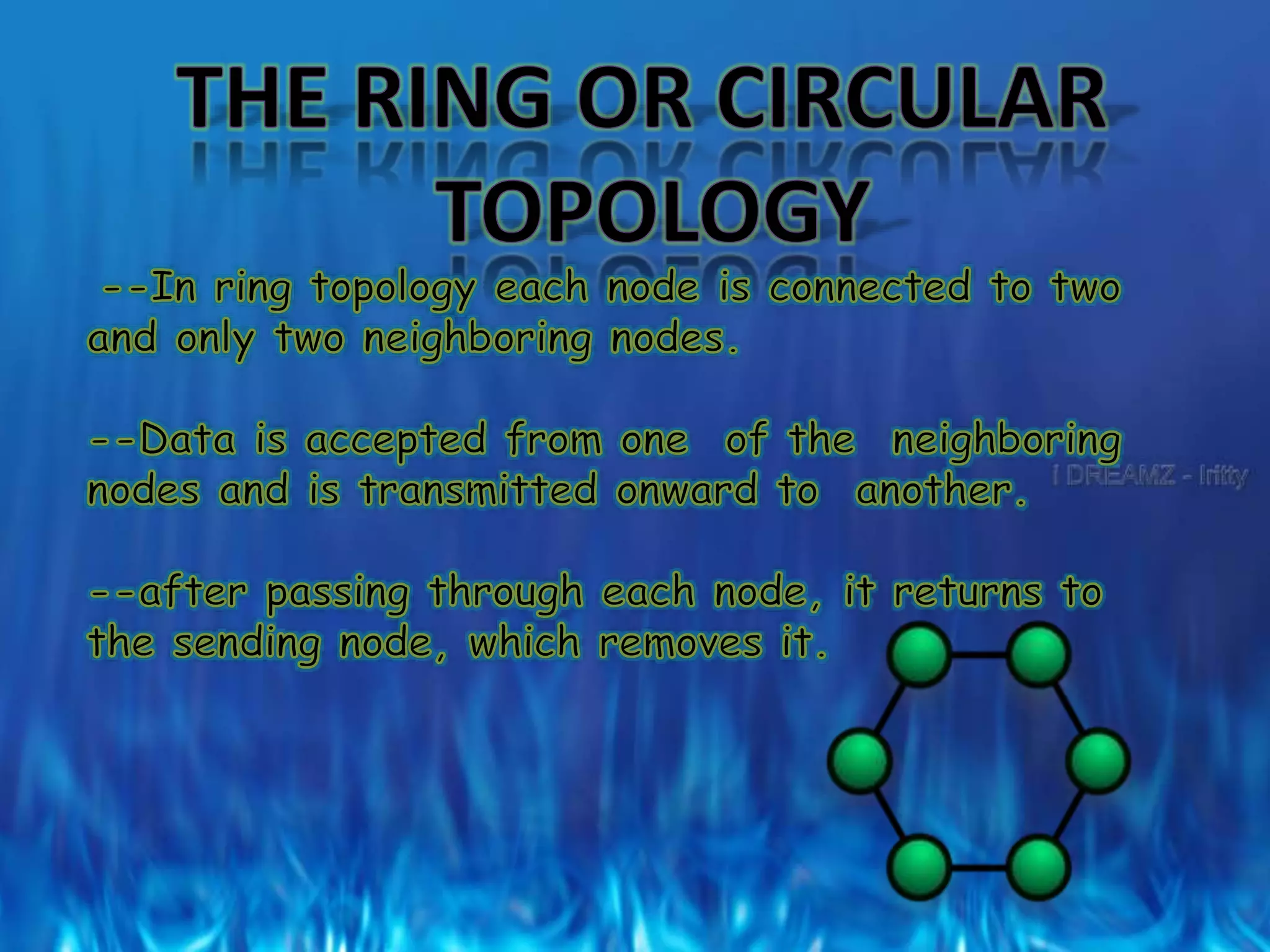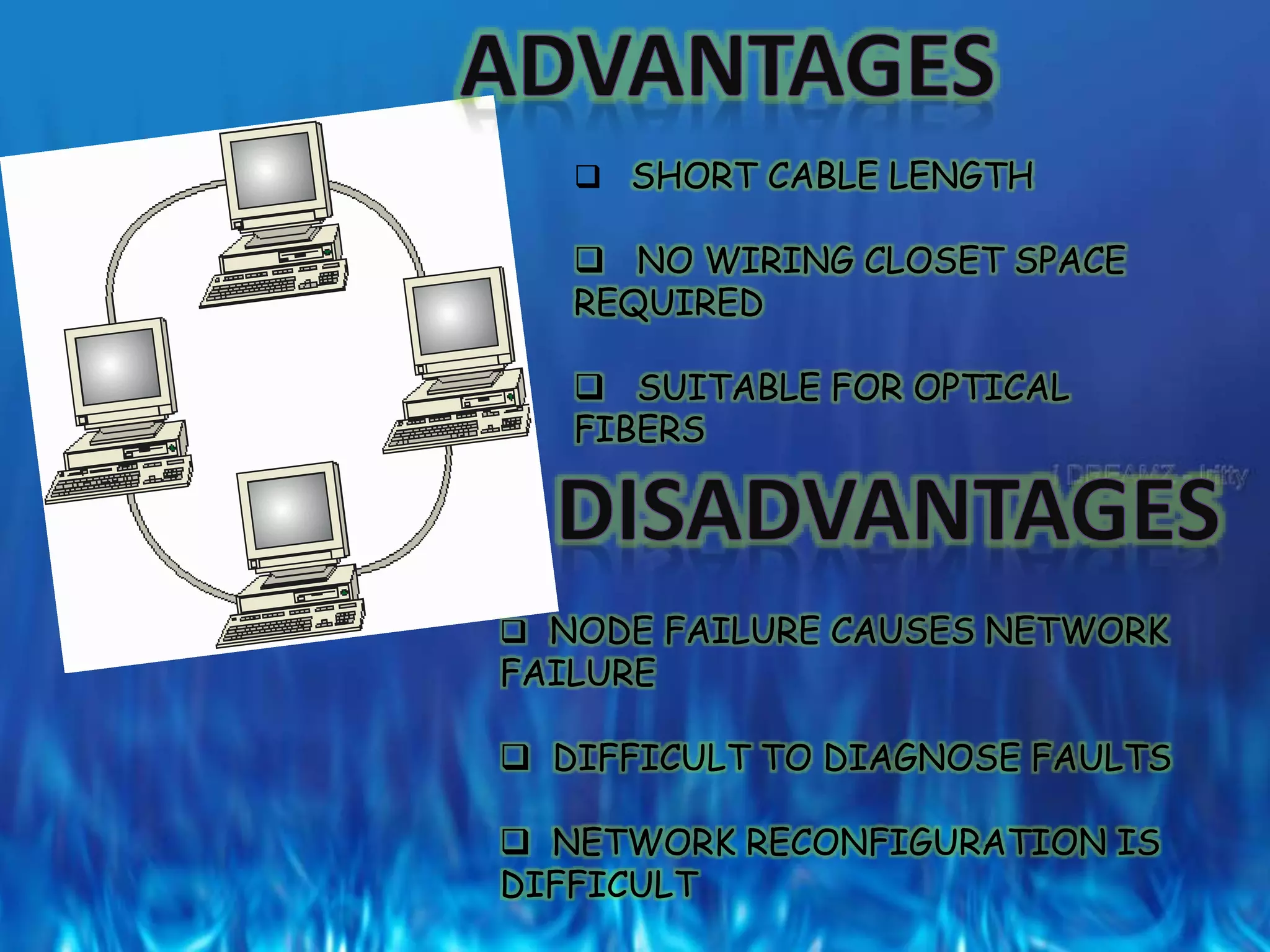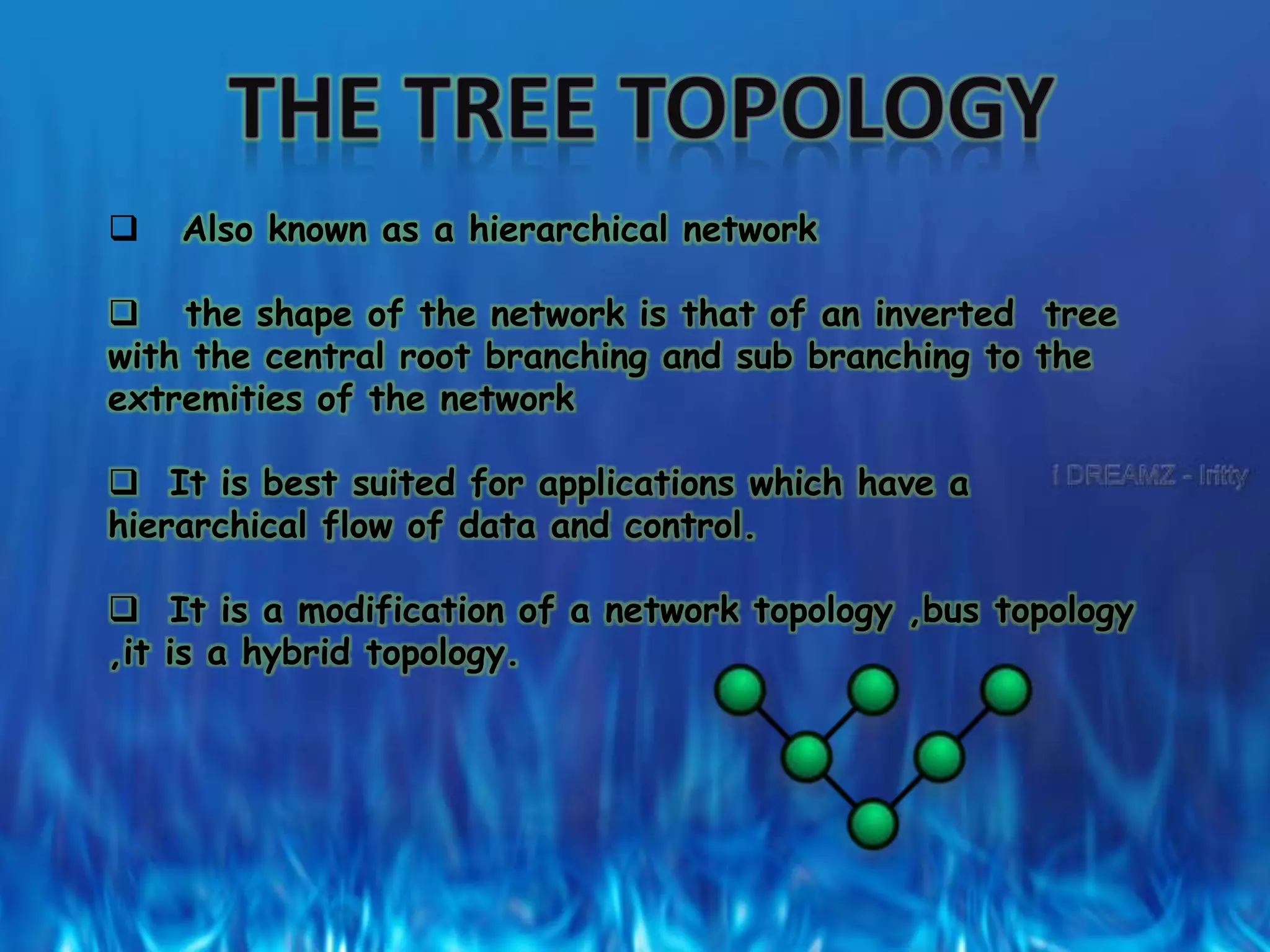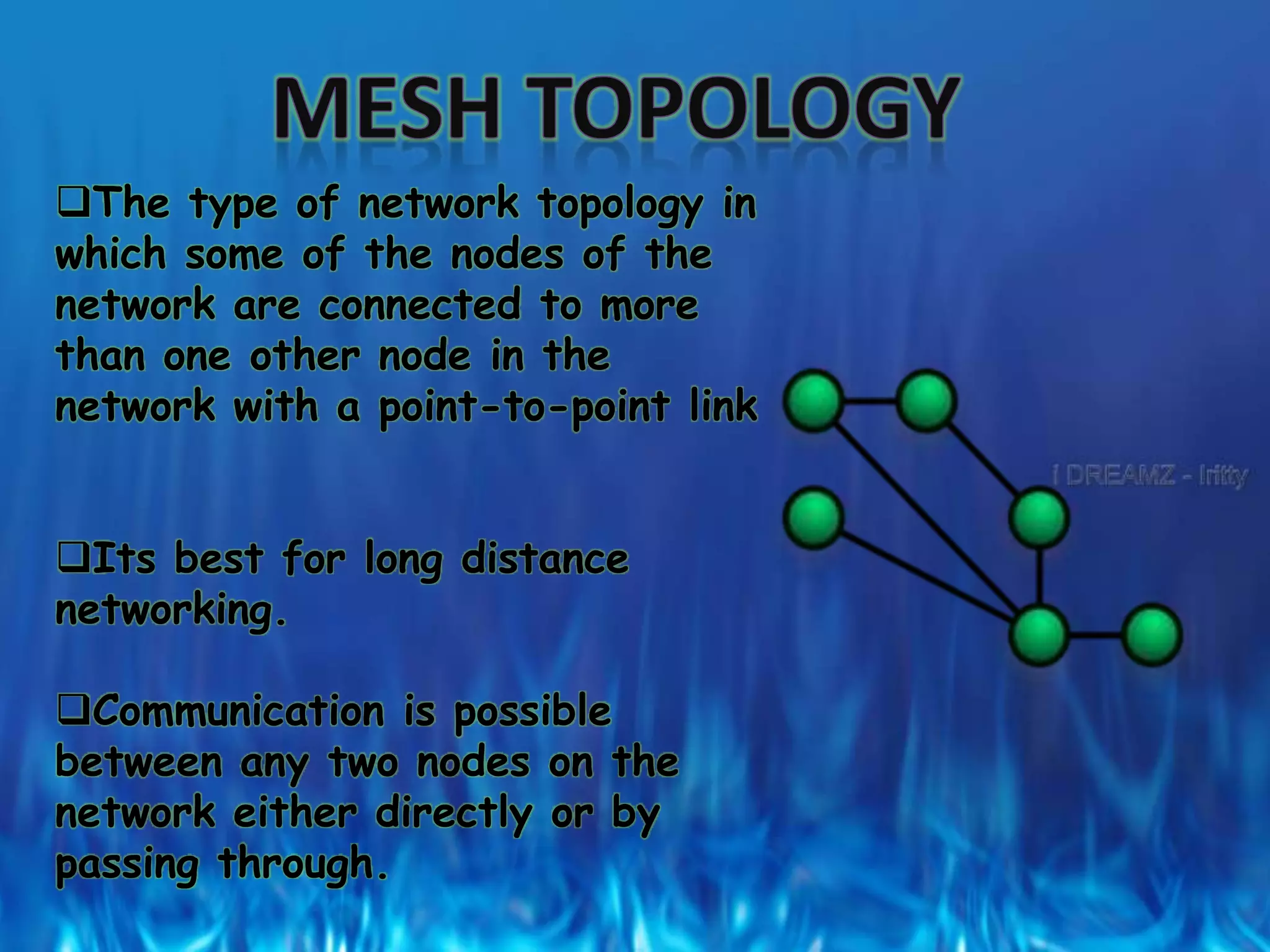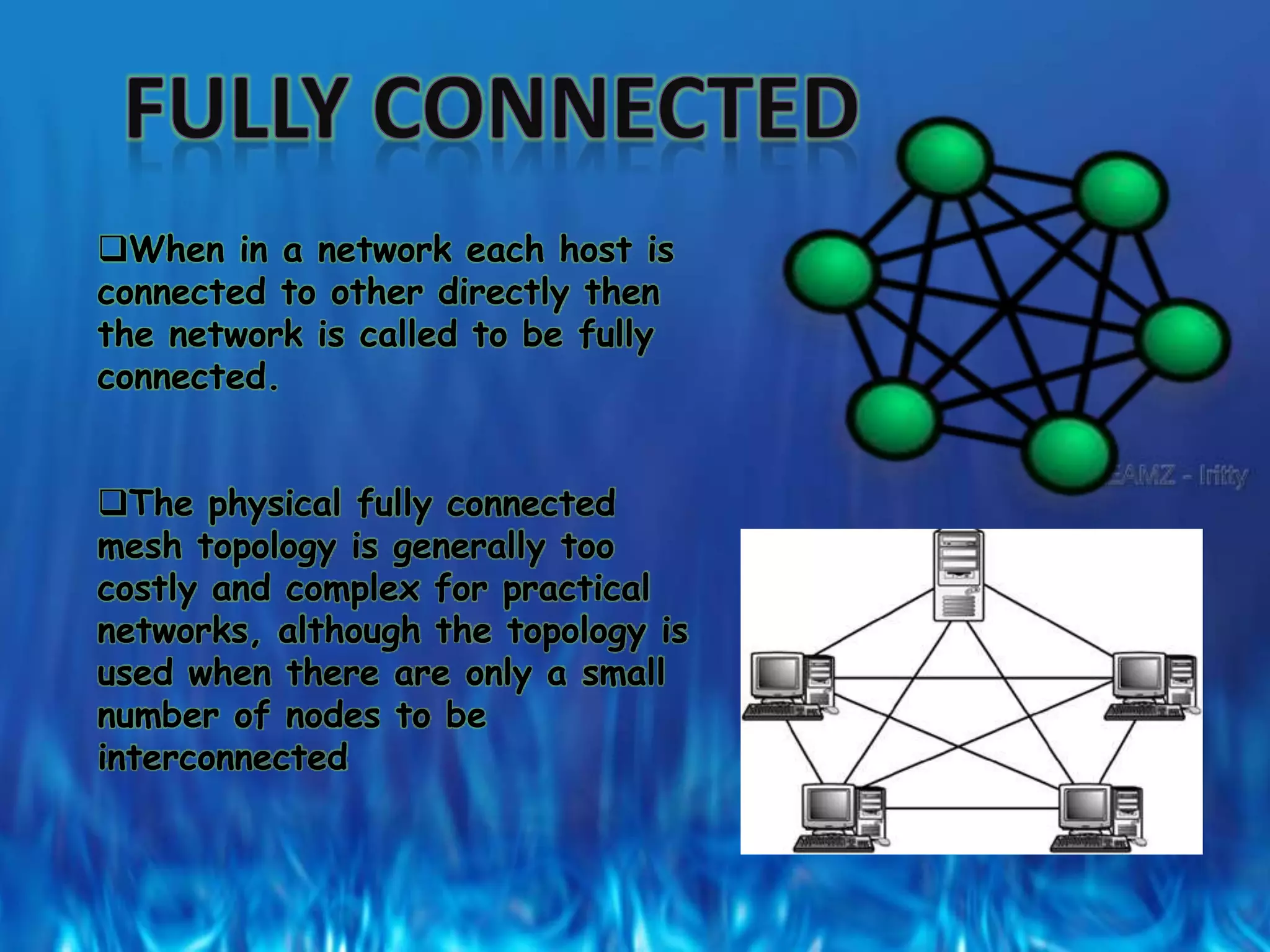This document discusses different types of computer network topologies. It describes local area networks (LANs), which connect devices over short distances like within an office or home. Metropolitan area networks (MANs) connect multiple LANs over a larger area like a city. Wide area networks (WANs) span even larger distances like an entire country or the global Internet. Common network topologies include star, bus, ring, tree, graph and mesh. Star topology has a central hub that devices connect to. Bus topology uses a shared communication line. The document provides details on these different network topologies.
